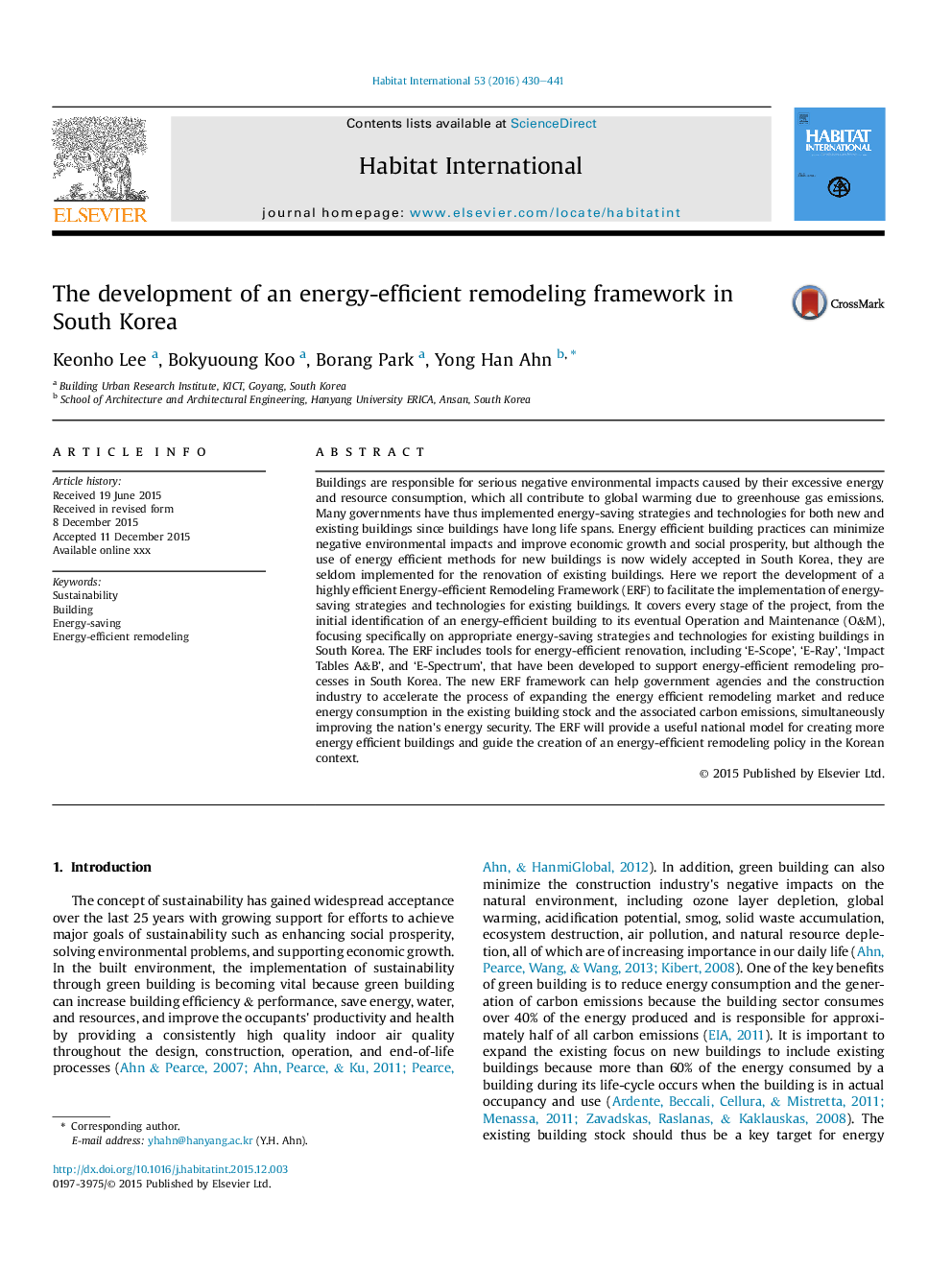| Article ID | Journal | Published Year | Pages | File Type |
|---|---|---|---|---|
| 7455723 | Habitat International | 2016 | 12 Pages |
Abstract
Buildings are responsible for serious negative environmental impacts caused by their excessive energy and resource consumption, which all contribute to global warming due to greenhouse gas emissions. Many governments have thus implemented energy-saving strategies and technologies for both new and existing buildings since buildings have long life spans. Energy efficient building practices can minimize negative environmental impacts and improve economic growth and social prosperity, but although the use of energy efficient methods for new buildings is now widely accepted in South Korea, they are seldom implemented for the renovation of existing buildings. Here we report the development of a highly efficient Energy-efficient Remodeling Framework (ERF) to facilitate the implementation of energy-saving strategies and technologies for existing buildings. It covers every stage of the project, from the initial identification of an energy-efficient building to its eventual Operation and Maintenance (O&M), focusing specifically on appropriate energy-saving strategies and technologies for existing buildings in South Korea. The ERF includes tools for energy-efficient renovation, including 'E-Scope', 'E-Ray', 'Impact Tables A&B', and 'E-Spectrum', that have been developed to support energy-efficient remodeling processes in South Korea. The new ERF framework can help government agencies and the construction industry to accelerate the process of expanding the energy efficient remodeling market and reduce energy consumption in the existing building stock and the associated carbon emissions, simultaneously improving the nation's energy security. The ERF will provide a useful national model for creating more energy efficient buildings and guide the creation of an energy-efficient remodeling policy in the Korean context.
Keywords
Related Topics
Social Sciences and Humanities
Social Sciences
Development
Authors
Keonho Lee, Bokyuoung Koo, Borang Park, Yong Han Ahn,
